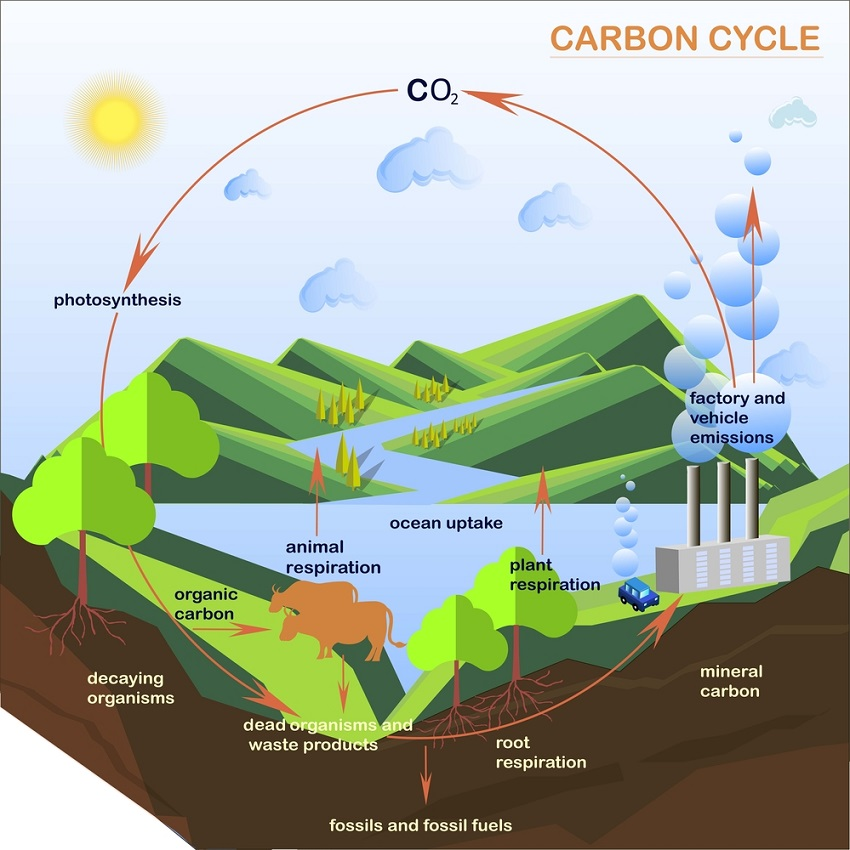Orbiting Carbon Observatories (OCOs) | 13 Aug 2025
Why in News?
The US has directed NASA to prepare for the early termination of two critical satellites-OCO-2 and OCO-3, which track atmospheric carbon dioxide (CO2) and monitor crop health.
What is Orbiting Carbon Observatories (OCOs)?
- About: The OCOs are a series of NASA’s Earth observation satellites designed to provide crucial data for tracking CO2 sources and sinks, and their impact on global climate systems.
- The first mission, OCO (2009), failed due to a launch vehicle fairing issue.
- However, the subsequent mission, OCO-2 (2014), was successfully launched, measuring atmospheric CO2, identifying its sources and sinks, and tracking crop health through the 'glow' of plant photosynthesis.
- It operates in a sun-synchronous polar orbit to observe any location at the same time of day.
- OCO-3 (2019), installed in the ISS, orbits Earth every 90 minutes, allowing observations of the same location at multiple times of day and providing complementary data to OCO-2.
- Significance: OCO satellites provide global, high-resolution CO2 data, tracking seasonal and regional variations.
- For decades, tropical rainforests were considered the planet's lungs, clearing vast amounts of CO2. However, OCO-2 data revealed that boreal forests (taiga), the coniferous forests in higher latitudes, play a significant role in CO2 absorption.
- Additionally, OCO data showed that natural carbon sinks can transform into carbon sources during events like droughts or deforestation.
- By detecting light from photosynthesis, OCOs map global plant growth, aiding climate mitigation and policy formulation for emission reduction.
About CO2 & Global Carbon Cycle
- About: CO2 is a major greenhouse gas, trapping heat that would otherwise escape into space, and is essential for life and maintaining Earth’s atmospheric balance.
- Sources of CO2: Fossil fuel combustion, respiration, deforestation, and organic decay.
- Sinks of CO2: Vegetation, forests, and oceans, which absorb roughly half of human-produced CO2.
- Global Carbon Cycle: The global carbon cycle is the exchange of carbon between the atmosphere, oceans, land, and fossil fuels, occurring over seconds (photosynthesis) to millennia (fossil fuel formation).
UPSC Civil Services Examination, Previous Year Questions (PYQs)
Prelims
Q1. In the context of mitigating the impending global warming due to anthropogenic emissions of carbon dioxide, which of the following can be the potential sites for carbon sequestration? (2017)
- Abandoned and uneconomic coal seams
- Depleted oil and gas reservoirs
- Subterranean deep saline formations
Select the correct answer using the code given below:
(a) 1 and 2 only
(b) 3 only
(c) 1 and 3 only
(d) 1, 2 and 3
Ans: (d)
Q2. What is/are the advantage/advantages of zero tillage in agriculture? (2020)
- Sowing of wheat is possible without burning the residue of previous crop.
- Without the need for nursery of rice saplings, direct planting of paddy seeds in the wet soil is possible.
- Carbon sequestration in the soil is possible.
Select the correct answer using the code given below:
(a) 1 and 2 only
(b) 2 and 3 only
(c) 3 only
(d) 1, 2 and 3
Ans: (d)

